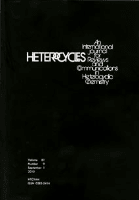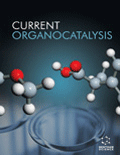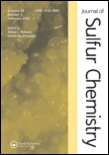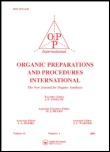
JOURNAL OF HETEROCYCLIC CHEMISTRY
Scope & Guideline
Charting the Future of Organic Chemistry
Introduction
Aims and Scopes
- Synthesis of Heterocycles:
The journal emphasizes novel synthetic methodologies for the preparation of various heterocyclic compounds, exploring diverse reaction conditions and catalysts. - Biological Activity and Medicinal Chemistry:
There is a strong focus on the biological evaluation of synthesized compounds, particularly their anticancer, antimicrobial, and antiviral activities, thus bridging the gap between synthetic chemistry and pharmacology. - Characterization Techniques:
Papers often include detailed characterization using spectroscopic methods such as NMR, IR, and X-ray crystallography, which supports the structural elucidation of newly synthesized compounds. - Green Chemistry Approaches:
The journal promotes environmentally friendly synthesis methods, including solvent-free reactions and the use of recyclable catalysts, reflecting a commitment to sustainable chemistry practices. - Multicomponent Reactions:
The use of multicomponent reactions to streamline the synthesis of complex heterocycles is a recurring theme, showcasing efficiency in synthetic routes.
Trending and Emerging
- Targeted Anticancer Agents:
There is a significant increase in research focused on developing novel heterocycles as targeted anticancer agents, reflecting a broader trend in medicinal chemistry towards personalized medicine. - Use of Green Chemistry:
A growing trend towards sustainable and environmentally friendly synthetic methods is evident, with more papers emphasizing green chemistry practices such as solvent-free reactions and the use of renewable resources. - Multicomponent Reactions:
The rise of multicomponent reactions as a preferred method for synthesizing complex heterocycles is notable, highlighting their efficiency and versatility in organic synthesis. - Biological Evaluation:
There is an increasing emphasis on the biological evaluation of synthesized compounds, particularly in the context of drug discovery and development, indicating a convergence of synthetic and biological research. - Advanced Characterization Techniques:
Enhanced focus on advanced characterization techniques, including computational modeling and structure-activity relationship (SAR) studies, is becoming more prevalent, reflecting the journal's commitment to rigorous scientific validation.
Declining or Waning
- Traditional Synthetic Methods:
There is a noticeable decrease in publications centered around traditional synthetic methods such as classical reflux or batch reactions, as newer, more efficient methodologies gain traction. - Less Focus on Inorganics:
Research involving inorganic heterocycles or organometallic compounds has seen a decline, potentially due to the growing emphasis on organic and bioactive heterocycles. - Limited Reporting on Theoretical Studies:
While theoretical studies and computational chemistry are important, there appears to be a waning interest in publishing purely theoretical papers, as the journal increasingly favors applied research with practical implications. - Reduction in Reviews:
The frequency of comprehensive review articles has decreased, indicating a shift towards original research articles, possibly due to the fast-paced nature of current research trends. - Diminished Focus on Agricultural Applications:
Although still relevant, there is a noticeable reduction in the number of papers specifically addressing the synthesis and application of heterocycles in agricultural chemistry.
Similar Journals

HETEROCYCLES
Innovative Insights for the Chemistry CommunityHETEROCYCLES, published by the Japan Institute of Heterocyclic Chemistry, stands as a pivotal journal within the fields of Analytical Chemistry, Organic Chemistry, and Pharmacology. With its ISSN 0385-5414 and E-ISSN 1881-0942, HETEROCYCLES has been a respected platform for scholarly work since its establishment in 1983, featuring innovative research up until 2022. While currently not open access, the journal is renowned for its rigorous peer-review process, ensuring the dissemination of high-quality research. Despite its Q4 ranking in the 2023 quartiles for its categories, it plays a crucial role in bridging gaps in knowledge and advancing the discourse on heterocyclic compounds, which are vital in drug discovery and development. Researchers, professionals, and students who are engaged in chemistry and pharmacology will find HETEROCYCLES an essential source of cutting-edge studies, insights, and an opportunity to contribute to the evolving landscape of these scientific fields.

Current Organocatalysis
Pioneering Insights for a Sustainable FutureCurrent Organocatalysis is a premier academic journal dedicated to the dynamic field of organocatalysis, published by Bentham Science Publishers, Ltd. Based in the United Arab Emirates, this journal has been a valuable resource for researchers since its inception in 2014 and will continue to publish impactful articles until 2024. The journal provides a platform for sharing groundbreaking research, reviews, and insights that significantly contribute to the fields of Analytical Chemistry, Catalysis, and Organic Chemistry. With a Q4 ranking in several chemistry categories, it identifies and disseminates emerging strategies and methodologies in organocatalysis, promoting collaboration and advancement in the community. While it operates on a subscription basis, the journal ensures accessible content for its audience to further supplement academic learning and professional development. Researchers, professionals, and students are encouraged to explore and contribute to this critical field, leveraging the journal as an essential resource for the latest trends and innovations in organocatalysis.

Journal of Sulfur Chemistry
Fostering Insights in Sulfur ChemistryThe Journal of Sulfur Chemistry, published by Taylor & Francis Ltd, is a pivotal resource dedicated to the field of sulfur chemistry, offering a unique platform for researchers, professionals, and students alike to explore innovative discoveries and advancements. With an ISSN of 1741-5993 and an E-ISSN of 1741-6000, this journal has been a prominent contributor to the academic discourse since its inception in 2004, converging knowledge and research through the year 2024. Recognized in the 2023 Scopus rankings, it holds a strong position at Q3 in the category of miscellaneous chemistry, ranking #173 out of 408, within the 57th percentile, underscoring its role as a valuable asset in the chemistry community. Although the journal does not currently offer open access, it remains a vital source for novel insights and scholarly articles, significantly impacting ongoing research and education in sulfur chemistry.

ORGANIC PREPARATIONS AND PROCEDURES INTERNATIONAL
Transforming Knowledge into Action in Organic SynthesisORGANIC PREPARATIONS AND PROCEDURES INTERNATIONAL is a prominent journal in the field of organic chemistry, published by Taylor & Francis Inc. With an ISSN of 0030-4948 and an E-ISSN of 1945-5453, this journal has been a vital resource for researchers since its inception in 1971, showcasing a broad range of methodologies, protocols, and innovative applications within organic synthesis. Although categorized in the Q4 quartile for organic chemistry, the journal provides a critical platform for researchers at all levels to disseminate their findings and to access a wealth of practical organic procedures. It currently ranks #151 out of 211 in the Scopus Organic Chemistry category, underscoring its role in advancing the discipline despite its relatively modest impact factor. The journal offers a diverse collection of scholarly articles that are essential for both professional chemists and students, enriching their understanding of organic preparation techniques. Inviting contributions that encompass the full spectrum of organic synthesis, this journal serves as a valuable conduit for knowledge exchange in the ever-evolving field of organic chemistry.

HETEROCYCLIC COMMUNICATIONS
Fostering Knowledge Exchange in Organic ChemistryHeterocyclic Communications, published by De Gruyter Poland Sp. z o.o., is a leading open-access journal dedicated to the field of organic chemistry. With its ISSN 0793-0283 and E-ISSN 2191-0197, this journal has been disseminating significant research findings since its inception in 1994, and continues to contribute to the scientific community through 2024. Based in Germany, Heterocyclic Communications occupies a reputable position, classified in the third quartile (Q3) of organic chemistry journals with a Scopus rank of #119 out of 211, indicating its growing influence in the field. The journal is committed to fostering scholarly communication and knowledge exchange among researchers, professionals, and students, providing a platform for innovative studies and insights into heterocyclic compounds and their applications. As an open-access journal since 2019, it ensures that valuable research is readily available to a global audience, enhancing collaboration and advancement in organic chemistry research.

Molbank is an open-access journal published by MDPI, dedicated to the fields of Biochemistry, Organic Chemistry, and Physical and Theoretical Chemistry. Established in 2002, this journal has served as a vital platform for the dissemination of research findings, where researchers and professionals share original articles focusing on molecular chemistry, synthesis, and related studies. With a commitment to open access, Molbank enables global access to scientific knowledge, fostering collaboration and innovation among scientists. While currently categorized in the fourth quartile for its field rankings, it provides a unique opportunity for emerging scholars to contribute to and engage with the scientific community. The journal is based in Switzerland, operating from its office at ST ALBAN-ANLAGE 66, CH-4052 BASEL, SWITZERLAND, and continues to attract submissions until 2024. Researchers, students, and professionals looking to expand their knowledge and participate in the dialogue of current molecular chemistry can benefit significantly from engaging with the content published in Molbank.

ORGANIC SYNTHESES
Championing Rigorous Research in Organic SynthesisORGANIC SYNTHESES is a prestigious journal dedicated to the field of organic chemistry, published by ORGANIC SYNTHESES INC. Since its inception in 1946, the journal has served as a vital platform for researchers, educators, and practitioners in chemistry, showcasing significant findings and methodologies that advance the discipline. Although it currently does not offer open access, it is recognized for its rigorous peer-review process and its contribution to standardizing organic synthesis methods. With an ISSN of 0078-6209 and an E-ISSN of 2333-3553, the journal's impact reflects its quality, with a current Scopus ranking placing it in the fourth quartile in both Organic Chemistry and Physical and Theoretical Chemistry. This positioning underscores its critical role in fostering knowledge and innovation within these fields. Researchers and students alike will find ORGANIC SYNTHESES an essential resource for staying informed on contemporary practices and discoveries in organic synthesis.

Macroheterocycles
Illuminating the Path of Chemical InnovationMacroheterocycles is a premier academic journal dedicated to the exploration and advancement of Analytical Chemistry and Organic Chemistry, published by the esteemed Ivanovo State University of Chemical Technology. Since its inception in 2008, this open-access journal has focused on providing a platform for innovative research and breakthrough discoveries in the field of heterocyclic compounds. With its current ranking in the Q3 quartile for Analytical Chemistry and Q4 quartile for Organic Chemistry, Macroheterocycles is rapidly establishing itself as a valuable resource for scientists, researchers, and students seeking to enrich their understanding of complex chemical structures and analytical techniques. Its comprehensive publication model ensures that the latest findings are accessible to a global audience, fostering collaboration and discourse in the scientific community. With ongoing contributions aimed at addressing contemporary challenges in chemistry, this journal is poised to make significant impacts in the field while encouraging the dissemination of knowledge within and beyond Russia.

HETEROATOM CHEMISTRY
Unlocking the Potential of Heteroatoms in Organic ChemistryHeteroatom Chemistry is a prominent open-access journal dedicated to advancing the field of heteroatom chemistry, with a particular focus on the chemistry of elements other than carbon in organic compounds. Published by Wiley-Hindawi, this journal provides researchers, professionals, and students with a platform to disseminate and access novel research findings related to the synthesis, properties, and applications of heteroatom-containing compounds. Since its inception in 1990 and gaining open access status in 2019, the journal has fostered academic collaboration and innovation throughout its converged years, although it currently holds a category quartile ranking of Q4 in Chemistry (miscellaneous) and ranks #319 out of 408 in general chemistry within Scopus. With its commitment to high-quality research and broad accessibility, Heteroatom Chemistry is poised to be an essential resource for anyone looking to explore the rich and varied applications of heteroatom chemistry in diverse scientific fields.

RUSSIAN JOURNAL OF ORGANIC CHEMISTRY
Advancing the Frontiers of Organic ChemistryRUSSIAN JOURNAL OF ORGANIC CHEMISTRY, published by MAIK NAUKA/INTERPERIODICA/SPRINGER, stands as a pivotal resource in the realm of organic chemistry, catering to an audience of researchers, professionals, and students keen on the latest advancements in this dynamic field. With an ISSN of 1070-4280 and E-ISSN of 1608-3393, this journal has been a fixture in academic literature since its inception in 1996 and continues to play a significant role as it converges towards 2024. Despite currently holding a Q4 ranking in organic chemistry and a modest placement in the Scopus ranks, the journal offers valuable insights and contributions that reflect the ongoing research and trends within the discipline. Though it does not operate under an open access model, the journal provides essential studies and reviews that enhance scientific dialogue and innovation. Located in the United States, the journal supports the advancement of organic chemistry, fostering a deeper understanding of complex chemical interactions and methodologies.